#neighbour!graves
Text
Neighbour!Graves who insists on taking care of any broken things around your house. The door is squeaking? He's right there, don't worry darlin'. Your faucet is leaking? He will take care of it, don't you worry your pretty little head. The cute picket white fence around your house has a missing piece? He's right there to fix it!
You always look embarrassed and so confused when he refuses any payment, your big doe eyes looking up at him and your pretty full lips parting slightly when he tells you that he doesn't need the money, he's just happy to help his new neighbour especially since she's such a nice young lady. Definitely puts on his most charming smile, that infamous southern charm working its way and Philip can't help but chuckle lightly at the pout and flush on your face.
It's totally not like he uses this as an excuse to not only help you and impress you with his skills around the home; that he's a born handyman and his prowess as a good candidate for a stable and capable partner! Nevermind that you moved in like only a month ago and your conversations either happened in the mornings when you left for class or when you're gardening.
Another reason that's a bit deeper hidden is that he's taking in your home, like he's scouting the surroundings in the field and he loves what he sees♡ Your home was cozy and cute on the inside, just like you. His theory that your parents have to be loaded was also proven to be right but that's not a problem, he's a commander, a seasoned soldier and the CEO of Shadow Company so he has money too so if you (inevitably) get with him he will be able to privide for you and any future babies♡
#kin speaks#neighbour!Graves#cod x reader#cod mw x reader#philip graves x reader#graves x reader#philip graves#cod graves
2K notes
·
View notes
Text
cw: slightly dubcon
thinking about pathetic older neighbour!Graves, begging you to sleep in a bed with him, just to cuddle!! he hasn't held anyone in so long, how can you say no darling? he just wants to cuddle, don't mind his hand slipping between your thighs!! please doll?
#cw dubcon#dubcon#tw dubcon#gothghostiie#graves#cod graves#graves cod#phillip graves#graves x reader#phillip graves x reader#cod#cod mwii#cod mw2#call of duty#older neighbour!graves#and with that a good night#insgert that vid of the guy and then violently playing the flute
28 notes
·
View notes
Text
I drew the worst people ever Ft: Milkman/Francis
Miles Fairchild Andrew Graves
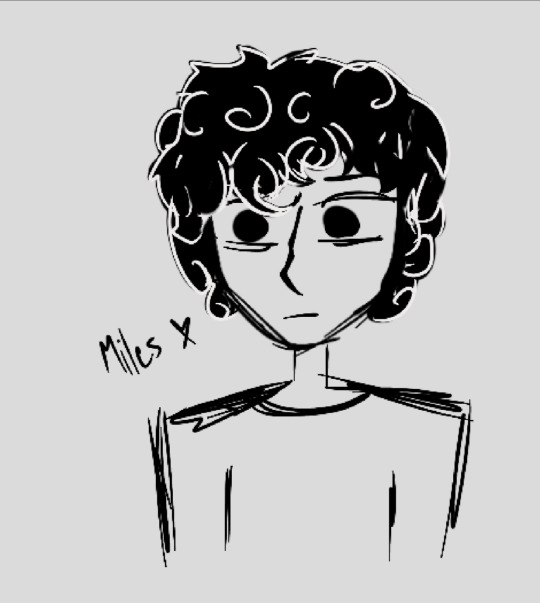

Vincent Charbonneau Orin Scrivello
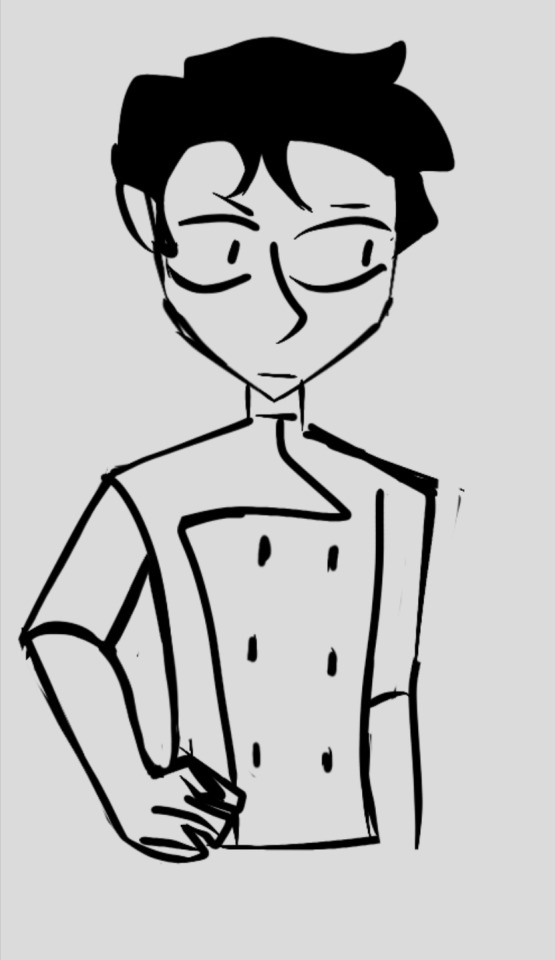

Francis Mosses

#miles the turning#the turning#miles fairchild#tcoaal#the coffin of andy and leyley#andrew graves#andrew tcoaal#vincent charbonneau#vincent dead plate#dead plate#dead plate game#orin lsoh#lsoh#orin scrivello#little shop of horrors#thats not my neighbor#thats not my neighbour milkman#milk man#francis mosses#milkman that's not my neighbor#tnmn#tnmn milkman
22 notes
·
View notes
Text
part 2, part 3
#studio ghibli#poll#nausicaä of the valley of the wind#castle in the sky#grave of the fireflies#totoro#my neighbor totoro#my neighbour totoro#kiki’s delivery service#only yesterday#porco rosso#ocean waves#pom poko#whisper of the heart#polls#movie poll#anime#ghibli#ghibli films#80s anime#90s anime#80s movies#80s films#90s movies#90s films#tumblr polls#vote
163 notes
·
View notes
Photo

by art.by.alisonho
art republished with artist’s permission
#studio ghibli#ghibli#anime#Moving Castle#howl's moving castle#My Neighbour Totoro#kiki's delivery service#spirited away#ponyo on the cliff by the sea#grave of the fireflies#anime food#ghibli food#food
704 notes
·
View notes
Text
So sad that Kentucky route zero never took off on tumblr because it’s so hard to fandomfy such a work because I have so many words of analysis on this game I love it so much
#(I’ve never played it all the way through)#but it’s soooo good though#the way it lays out it’s themes the way that it intersects with almost every aspects of the humanities#like the construction of the zero as non Euclidean shapes?????#and the use of the idea of the simulacra along the zero and blurring the space between reality and fiction even within the fiction???#the meta elements the critiques of academia THE ENTERTAINMENT#all of the references as well I don’t think I will ever get every single reference the game makes#I’m trying to write and comprehensive essay on it and I’ve got 1600 words already on a just a single part#it’s depression and it’s hopeful and even the secret epilogue!!!!!!#the death of the hired man being ambiguous in the end humanity wins in the face of tragedy!!!!#I even wrote about how the games ends on the imagery of a pair of horses called the neighbours in a grave#even in death you find community and companionship#the delivery being completed for Conway????#like also if you view it through the lens of Conway the fame is a tragedy but the game goes on after Conway leaves#people go on despite everything!!!!!#I can’t this game is so good go play it#kentucky route zero#kr0
31 notes
·
View notes
Text
Lol didn't realise how dependent I was on AO3 until now.
#This is bad#Struggling without my Lewis/Hathaway fix 😂😂#Will have to go back to my weird af One Foot in the Grave book#But not sure how long that'll keep me occupied#Although I am intrigued to see how tf Victor ends up sexting the neighbours (please god let it be Patrick and Pippa)#And what's gonna go down with Mrs Warboys' death row penpal#Text post#Personal#I was like 41 pages into the Lewis/Hathaway tag as well#It's an addiction fr#I don't think I've ever stuck with a ship for so long tbh#😂😂
5 notes
·
View notes
Text
#frank sinatra is stirring in his grave#mia's neighbours probably hate us now#it's fine though because it's a win for homosexuality
4 notes
·
View notes
Text

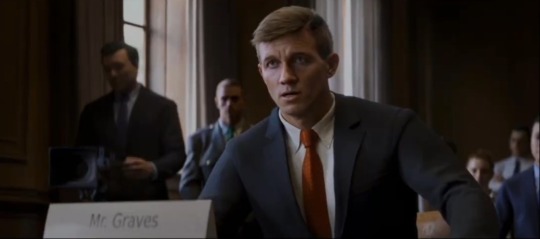


Since I can't stop thinking about the Graves pic in this cunty suit...How about neighbour!Graves and his new, cute neighbour girl that just moved into the house next? :(
You, this pretty young thing, most probably collage aged with likely loaded parents since they funded you a literal house in a good neighbourhood in this quiant little town and Philip literally can't get over the fact that he got so lucky! Your house just so happens to share a fence with his so he can indulge and watch you carefully from time to time as you acclimate to living alone in a house, pretty small one but regardless a house. Probably the first time alone away from mommy and daddy, Philip thinks and continues watching you do a remarkably good job especially around the garden.
Neighbour!Graves who as the popular and well-known member of the community swings by to 'welcome you into the neighbourhood', introduces himself like the gentleman he is and assures you that as a soldier (because he obviously had to show off) he will make sure to keep you safe and the blonde definitely got the most shit-eating grin when he saw how flustered and shy you got, probably intimidated by his presence :(
#kin speaks#cod x reader#cod mw x reader#nasty pervy neighbour graves has been on my mind since lije#february#but i somehow never got around to actually put this out so now here it is#brought to you by graves in a suit 😭#philip graves x reader#graves x reader#philip graves#cod graves#neighbour!graves
1K notes
·
View notes
Text
I'm only limited to 10 poll options, so ¯\_(ツ)_/¯
I'm also putting the English name because I'm lazy.
#studio ghibli#nausicaa#nausicaä of the valley of the wind#castle in the sky#grave of the fireflies#my neighbour totoro#kiki's delivery service#Princess Mononoke#porco rosso#whisper of the heart#spirited away#the cat returns#howl's moving castle#tales from earthsea#ponyo#the secret world of arrietty#from up on poppy hill#the wind rises#the tale of princess kaguya#when Marnie was there#I'm aware there's more but I'm too lazy to keep going
4 notes
·
View notes
Text
Animation Night 111: Studio Ghibli, 1988
Hello friends! It is That Night once again~
Tonight we have an Animation Night whose numeral is all 1s, which seems like some sort of significant occasion - indeed, the next time we can expect this kind of thing will be in another 111 animation nights. So, let’s watch something significant!

So tonight, we’ll be resuming our history of Hayao Miyazaki, Isao Takahata and Studio Ghibli! This picks us up from, ahem...
Animation Night 41: Isao Takahata - a brief guide to Takahata’s career
Animation Night 70: all right then Hayao, let’s do This - about Miyazaki and Takahata’s early years at Toei and the TMS orbit
Animation Night 100: One Zero Zero - the founding of Studio Ghibli, and the big guys’ respective big jidaigeki films, Princess Mononoke and The Tale of Princess Kaguya
Tonight we’ll be returning to the earlier years of the studio, for what must be one of the most... conceptually jarring double bill premieres in film history: the night that people got to watch My Neighbour Totoro (となりのトトロ) and Grave of the Fireflies () back to back!
There are of course no Hayao Miyazaki characters more visually iconic than Totoro, who indeed quickly became the logo of Ghibli. A playful, fluffy round forest spirit who keeps an eye out for children, Totoro is very much an evolution of the design of the panda character in Panda Kopanda (1972), created by Miyazaki and Takahata back in their days at A-pro...
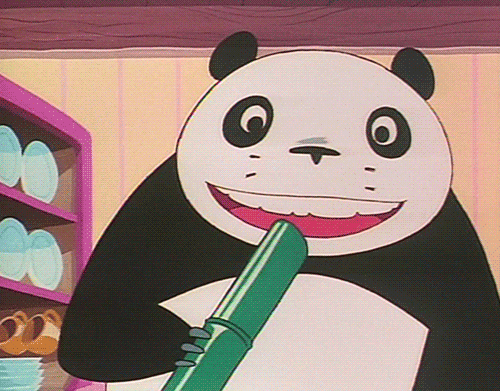
In 1988, Studio Ghibli had gotten off to a strong start. Their first two movies, Nausicaa of the Valley of the Wind (1984, technically animated at Topcraft, but created by the staff who would become Ghibli) and Castle in the Sky (1986), were both grand fantasy adventure movies. So both Totoro and Fireflies represented pretty large departures for the studio: for Takahata, it was his first time directing a full movie, and also a major break in terms of tone: a tragic realist war drama in a period when fantasy films were all the rage. For Miyazaki, it was a return to the more children-oriented works he’d made in his TMS days, but with his new extremely ambitious approach to animation. (Not everyone could, after all, rely on Yoshinori Kanada to take their key scenes!)
[Nausicaa, like Miyazaki’s previous The Castle of Cagliostro, can be placed within the broader trend of the rise of ‘bishōjo’ characters as an object of fan fixation, a subject I’ll be getting into when I write the next couple of posts in the evolution of the anime girl series but for now, see Watzky I guess!]
As much as these films seem incredibly different was that both centre on Japanese children in historical settings, and both deal in some way with death and grief. Miyazaki’s film represents a pastoral ideal of lost childhood in the countryside, overshadowed by the absence of a sick mother; the one crisis in the film comes when a child vanishes and everyone is afraid she might have drowned accidentally. Takahata’s film, meanwhile, follows children in the chaos of war in a fashion that can be compared Barefoot Gen (1983, Animation Night) - but this was Takahata’s big statement as a ‘realist’ director, and so aesthetically the approach it takes is quite distinct.

This is actually quite a significant occasion for me since, well, I haven’t actually seen Grave of the Fireflies! It’s one of the absolute biggest gaps in the Ghibli films I’ve seen. So to talk about it, I’ll have to turn to other writers. There is a fascinating article by Matteo Watzky which I keep coming back to, comparing the approaches of three ‘realist’ directors who work in animation - Satoshi Kon, Naoko Yamada and Takahata. In Watzky’s description, the ‘realism’ of Takahata, at least in this film, is a painfully beautiful approach to the way light falls on bodies and the detailed subtleties of acting, which are key to realising the film’s central symbol of a field of fireflies. Let me quote one of the most interesting passages from his essay:
Indeed, the set-up and its three layers (the flashback, the ghosts, and us the viewer) invite us to reflect not only on what’s happening, but on its consequences. The very choice of the medium of animation is also telling. Indeed, the moments when the choice of realism is the most striking is when we are shown close-ups of mutilated or dying bodies. One could argue that here, we are meant to witness the horror of war in detail and that realism is what makes us believe in what we see, and in turn react to it.
In fact, I’d say it’s the exact contrary. To understand this, we must reformulate my initial question : not “why realism ?” but “why animation, and not live-action ?” If this were live-action, we would indeed have no choice but to turn away our gaze in fear and horror (see, for example, the unbearable Hiroshima scenes in Shôei Imamura’s Black Rain). But since this is animation, these are just drawings and we know they are – which means that we don’t react to dead bodies as we would “real” people (that is actors) in agony. The distance created by the choice of the medium allows the gaze to be not pathetic or empathetic, but on the contrary, almost voyeuristic. There is indeed something profoundly upsetting about Takahata’s insistence on the degradations of the body, especially when said body is a young child’s. And I’d argue that this insistence is not meant to create pathos, but that it is cold and analytical – a study of death as it progresses in and on the body. This isn’t to say that Takahata is a sadistic director, who likes to torture his viewers with the sight of suffering : I believe that the distance created towards the pain on the screen invites the viewer to an even more critical look of Seita’s and Japan’s responsibility, and of Setsuko herself. Indeed, her dying body is not unbearable to watch – and precisely because of that, we have no choice but to watch, to be confronted to the utter horror that is her gratuitous death.
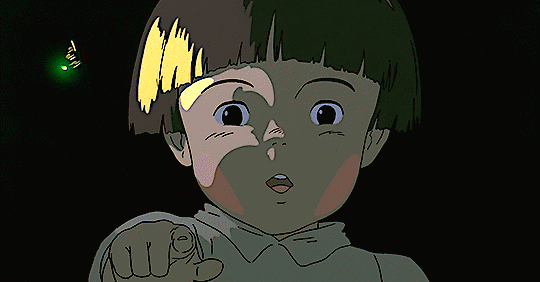
The same could be said of one of the movie’s climaxes and one of its most famous scenes – the fireflies sequence. We could say it is the culmination of the movie’s realistic aesthetic : the movements are slow and deliberate, the lighting is masterful and beautifully enhances the volume of the bodies – creating the all-important sense of presence. But at the same time, it’s the most unreal scene of the movie : the night setting, the overbearing music and the short-lived happiness all frame it like a dream. Even more importantly, the animation itself bears that contradiction : the light and shading on the bodies emphasizes the volume, but it does so to an unbelievably high degree, to the point that it feels like too much. We do forget that what we see are drawings, but what precisely are we seeing ? The two children look like real people as much as they do moving statues.
This way, Takahata, just like the two other directors I’m about to cover, doesn’t just follow the principles of realism. He either goes around them with the elaborate construction of a metanarration, or goes even deeper and surpasses realism at the same time that he’s following it. To put it in more abstract and energetic terms, he makes realism implode – that is, he destroys and transcends it from the inside.
So, what of the decision to place these two movies back to back? If Grave of the Fireflies takes such an approach to the responsibility of Japan for the deaths of these children, what does it mean to put it alongside Totoro? Does the contrast undercut the romantic setting of its companion film? Or do they complement each other, providing two different facets of the idea of ‘being a Japanese child’?
I’m honestly not sure, and that’s kind of why I want to recreate this double-bill: precisely to see the emotional effect of this unlikely combination (even if, of course, we can’t recreate the context of going to the theatre in Japan in 1988!). Of course rather than any artistic effect, part of the reason is financial: Ghibli was not yet at this point the juggernaut it became, so despite the difficulties of working on two films back to back, it was apparently judged the most profitable approach to direct two films at once.

Anyway, it’s about time I got started, but I wanted to make one last comment: Yoshinori Kanada (Animation Night 62, though god I need to give that one a proper writeup since it’s soooo cursory), the star ‘charisma animator’, returned once again, animating some of the most complex sequences of the film of the Catbus flying to the hospital. It’s interesting because the Ghibli models are quite a lot more complex than Kanada’s earlier preferences, although I think you can see some of that Kanada flair in the bus’s expressions, and of course he loooooved background animation and this sequence has plenty of that.
Even at this early stage in the lifespan of Ghibli, these films are also of course a statement in terms of character animation. Miyazaki and Takahata’s disdain for limited animation and the Mushi-pro lineage is infamous, and now with their own successful studio they finally had the ability to pour all the resources they needed into defining their own school. It’s not exactly Disney-like ‘full animation’, since it still made a certain use of the Kanada-school approach to lower framerates and expressive varied-tempo movement, and of course the layout system where animators are responsible for cuts rather than characters. But even so, Ghibli are quite distinctive within anime.
Their animation has a heavy emphasis on form - we come to understand Totoro through Mei’s physical interactions by bouncing on his belly. The way hair fluffs up, the detailed cel shading, the squashy mouths are all very distinctively recognisable as Ghibli hallmarks here.
And I think that’s all I have time to say. Why is there always such little time in the world? Oh, yeah, it’s because I stayed up all night writing about Umineko... 😅
Animation Night 111 will be live in just a minute, and films will start in maybe half an hour. Apologies, this is going to be running late again - hope you don’t mind staying up. We’ll lead with Grave of the Fireflies and follow up with Totoro - as brutal as it would be to go the other way around I think that’s probably the kindest option! So if you’d like to join, please drop in to twitch.tv/canmom sometime soon...
Edit: If you want to read something more substantial, I wrote a longer article comparing Grave of the Fireflies to two other films about children in the war, Barefoot Gen and In This Corner of the World! See here!
14 notes
·
View notes
Text
we are uncovering more potential lies
#he told the gf his roommate had dies but when she went to look for the grave there wasnt one#and he told his gf he was friends w tix and he told me they were neighbours#THIS IS CRAZY.#.txt
2 notes
·
View notes
Text
youtube
#isao takahata#studio ghibli#only yesterday#heidi: girl of the alps#grave of the fireflies#favourites#background noise#quality culture#media#art#pom poko#theme: transience#theme: isolation#theme: community#theme: nature#theme: imperialism#theme: urbanisation#theme: nationalism#theme: war#my neighbours the yamadas#theme: life#theme: death#theme: impermanence
0 notes
Text
It is over and everything is lost. This is the refrain repeated by Armenian families as they take that final step across the border out of their home of Nagorno-Karabakh.
In just a handful of days more than 100,000 people, almost the entire Armenian population of the breakaway enclave, has fled fearing ethnic persecution at the hands of Azerbaijani forces. The world barely registered it. But this astonishing exodus has vanished a self-declared state that thousands have died fighting for and ended a decades-old bloody chapter of history.
On Saturday, along that dusty mountain road to neighbouring Armenia, a few remaining people limp to safety after enduring days in transit.
Among them is the Tsovinar family who appear bundled in a hatchback littered with bullet holes, with seven relatives crushed in the back. Hasratyan, 48, the mother, crumbles into tears as she tries to make sense of her last 48 hours. The thought she cannot banish is that from this moment forward, she will never again be able to visit the grave of her brother killed in a previous bout of fighting.
“He is buried in our village which is now controlled by Azerbaijan. We can never go back,” the mother-of-three says, as her teenage girls sob quietly beside her.
“We have lost our home, and our homeland. It is an erasing of a people. The world kept silent and handed us over”.
She is interrupted by several ambulances racing in the opposite direction towards Nagorno-Karabakh’s main city of Stepanakert, or Khankendi, as it is known by the Azerbaijani forces that now control the streets. Their job is to fetch the few remaining Karabakh Armenians who want to leave and have yet to make it out.
“Those left are the poorest who have no cars, the disabled and elderly who can’t move easily,” a first responder calls at us through the window. “Then we’re told that’s it.”
As the world focused on the United Nations General Assembly, the war in Ukraine and, in the UK, the felling of an iconic Sycamore tree, a decades old war has reignited here unnoticed.
It ultimately heralded the end of Nagorno-Karabakh, a breakaway Armenian region, that is internationally recognised as being part of Azerbaijan but for several decades has enjoyed de facto independence. It has triggered the largest movement of people in the South Caucasus since the collapse of the Soviet Union.
Azerbaijan has vehemently denied instigating ethnic cleansing and has promised to protect Armenians as it works to reintegrate the enclave.
But in the border town of Goris, surrounded by the chaotic arrival of hundreds of refugees, Armenia’s infrastructure minister says Yerevan was now struggling to work out what to do with tens of thousands of displaced and desperate people.
“Simply put this is a modern ethnic cleansing that has been permitted through the guilty silence of the world,” minister Gnel Sanosyan tells The Independent, as four new busses of fleeing families arrive behind him.
“This is a global shame, a shame for the world. We need the international community to step up and step up now.”
The divisions in this part of the world have their roots in centuries-old conflict but the latest iterations of bitter bloodshed erupted during the collapse of the Soviet Union. The Karabakh Armenians, who are in the majority in the enclave, demanded the right to autonomy over the 4,400 square kilometre rolling mountainous region that has its own history and dialect. In the early 1990s they won a bloody war that uprooted Azerbaijanis, building a de facto state that wasn’t internationally unrecognised.
That is until in 2020. Azerbaijan, backed by Turkey, launched a military offensive and took back swathes of territory in a six-week conflict that killed thousands of soldiers and civilians. Russia, which originally supported Armenia but in recent years has grown into a colder ally, brokered a fragile truce and deployed peacekeepers.
But Moscow failed to stop Baku in December, enforcing a 10-month blockade on Nagorno-Karabakh, strangling food, fuel, electricity and water supplies. Then, the international community stood by as Azerbaijan launched a 24-hour military blitz that proved too much for Armenian separatist forces. Outgunned, outnumbered and weakened by the blockade, they agreed to lay down their weapons.
For 30 years the Karabakh authorities had survived pressure from international powerhouses to give up statehood or at least downgrade their aspirations for Nagorno-Karabakh. For 30 years peace plans brokered by countries across the world were tabled and shelved.
And then in a week all hope vanished and the self-declared government agreed to dissolve.
Fearing further shelling and then violent reprisals, as news broke several Karabakh officials including former ministers and separatist commanders, had been arrested by Azerbaijani security forces, people flooded over the border.
At the political level there are discussions about “reintegration” and “peace” but with so few left in Nagorno-Karabakh any process would now be futile.
And so now, sleeping in tents on the floors of hotels, restaurants and sometimes the streets of border towns, shellshocked families, with a handful of belongings, are trying to piece their lives together.
Among them is Vardan Tadevosyan, Nagorno-Karabakh’s minister of health until the government was effectively dissolved on Thursday. He spent the night camping on the floor of a hotel, and carries only the clothes he is wearing. Exhausted he says he had “no idea what the future brings”.
“For 25 years I have built a rehabilitation centre for people with physical disabilities I had to leave it all behind. You don’t know how many people are calling me for support,” he says as his phone ringed incessantly in the background throughout the interview.
“We all left everything behind. I am very depressed,” he repeats, swallowing the sentence with a sigh.
Next to him Artemis, 58, a kindergarten coordinator who has spent 30 years in Steparankert, says the real problems were going to start in the coming weeks when the refugees outstay their temporary accommodation.
“The Azerbaijanis said they want to integrate Nagorno-Karabakh but how do you blockade a people for 10 months and then launch a military operation and then ask them to integrate?” she asks, as she prepares for a new leg of the journey to the Armenian capital where she hopes to find shelter.
“The blockade was part of the ethnic cleansing. This is the only way to get people to flee the land they love. There is no humanity left in the world.”
Back in the central square of Goris, where families pick through piles of donated clothes and blankets and aid organisations hand out food, the loudest question is: what next?
Armenian officials are busy registering families and sending them to shelters in different corners of the country. But there are unanswered queries about long-term accommodation, work and schooling.
“I can’t really think about it, it hurts too much,” says Hasratyan’s eldest daughter Lilet, 16, trembling in the sunlight as the family starts the registration process.
“All I can say to the world is please speak about this and think about us. We are humans, people made of blood, like you and we need your help.”
8K notes
·
View notes
Text
fucking sucks how this year has gone honestly. even the holidays will be shit because the entire time there'll be the threat of celebratory missile strikes on my home city
#and i live not in ukraine so ill be probably flinching at fireworks our building's private homeowner neighbours insist on blasting#and ive not even been In The War!!! ive been here the whole 2022 time!!! and i STILL flinch!#my heart aches for people who will have it even worse as refugees during New Year#war in ukraine#bet all the good russians will give themselves ''permission'' to relax and kick back and have a good time that day#anyways kyiv bombed again. hoping hard that our friends weren't hit since it was in our raion#never been more grateful that my grandparents and us live across a raion boundary from eachother (never thought about it before!)#i at least know it wasn't my dad's mom and dad when he's not even been able to visit his brother's grave yet#god i hope he gets to see them in kyiv again. this shouldn't be in question. we meant to go back this summer/fall#fucking hell i hate russia and i hate russians for how their civilians get to not participate in this war#personal
1 note
·
View note
Text
OH OH i'm listening to music rn n i'm remembering studio ghibli was a big part of my childhood ><
#🌙.rambles#i wna watch those movies again it's rlly been a very long time#my neighbour totoro & howl's moving castle & princess mononoke & whisper of the heart & the wind rises & grave of the fireflies#& arrietty & from up on poppy hill & the tale of princess kaguya#apollo n i never managed too finish spirited away bcs we got scared as kids ;;;;#i'm listening to music rn n my spotify playlists r a mess#it's 11 pm already oh damn >.>
1 note
·
View note